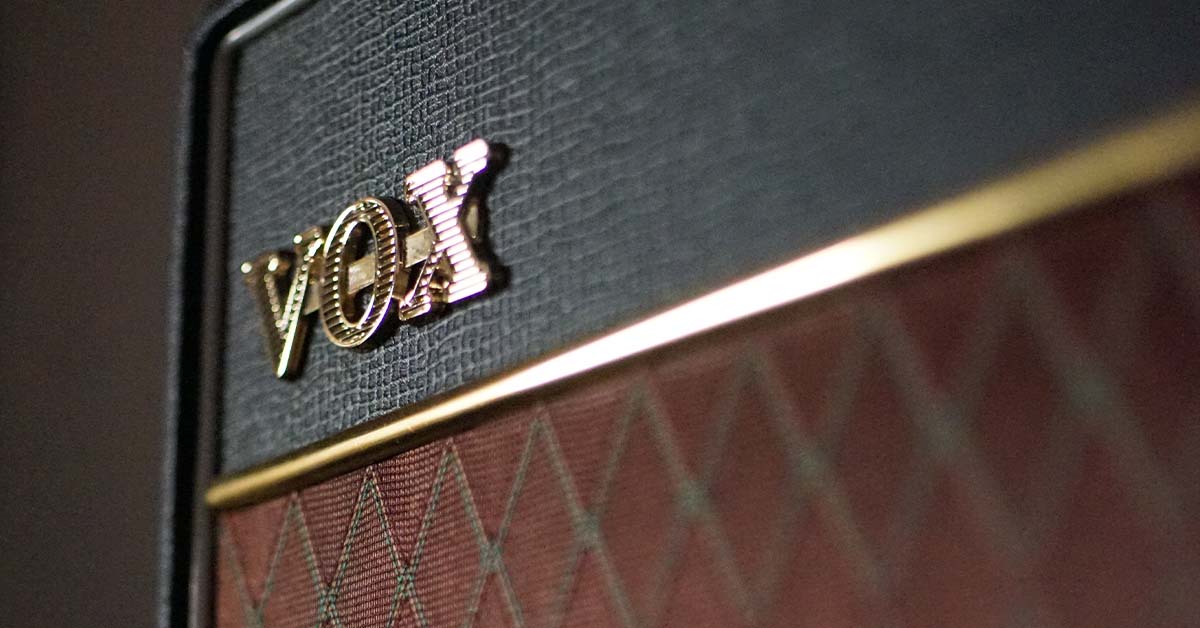What follows is a retrospective journey of me and my Vox AC15 amp. Most of the mods I performed were inspired by the guide found here, so you should definitely check it out if you’re considering doing some mods of your own.
So I’ve had my trusty Vox AC15 amp for 5 years now… where does the time go!? Since buying it I have not once thought of replacing it, nor have I had GAS (gear acquisition syndrome) over other amps, like I’ve had with guitars and pedals. A lot of people think that the Vox AC30 is the superior amp to the AC15, and this might be true if you are gigging a lot and don’t have a good PA system, but in all other departments the AC15 is better, in my opinion. For starters, 15 watts of tube power goes a very long way; it is just as loud as my 100w solid state amp. With the AC15 I can barely get the master volume past the halfway mark if I have top boost on full. The AC15 has a lot less clean headroom than the AC30 and for me this is a very good thing as I can get to that sweet creamy overdrive much sooner, without having to blow the lid off my house. With the AC30 you really need to crank it to get to the good stuff or you have to resort to using an overdrive pedal, which denies you access to your straight up tube tone.
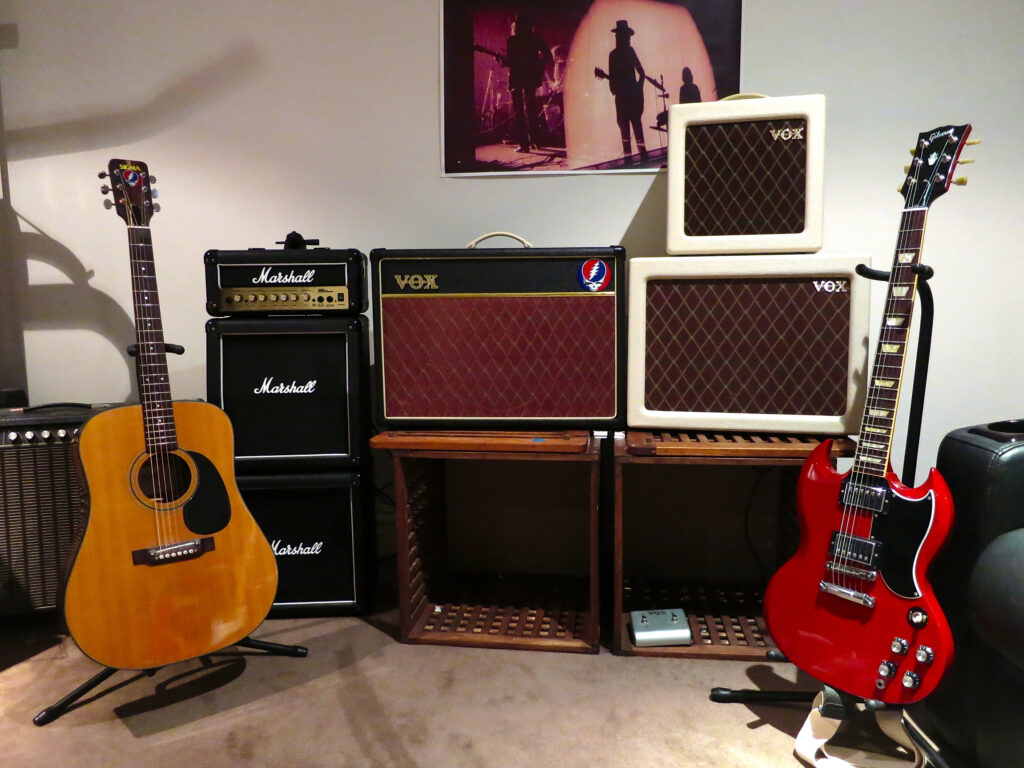
The AC15 is much better for recording compared to the AC30 because of it’s small size, it is also a whole lot lighter and easier to transport than the AC30, which is comparable in weight to a small elephant. The Vox AC15 is a lot cheaper than the AC30, and is cheaper to replace the speakers/tubes because there is half as many of both. Lastly, the AC30 has a tube rectifier while the AC15 doesn’t, this is both a positive and a negative for the AC15 as having a tube rectifier delivers better tone but also means that having the amp on standby can risk damaging it. I know this as I’ve read a lot of discussions about it on the net, my amp tech confirmed it, and my friend’s AC30 suffered a total meltdown because of it. Sure having a tube rectifier might lend the AC30 some slightly better tone, but at a large cost. Not being able to have the amp on standby while the tubes warm up can risk damaging the tubes, and they are expensive things to be constantly replacing. Also not being able to leave your amp on standby while you go off for a cigarette or something would be a real drag!
Even though the amp sounded brilliant the day I bought it, over the years I have modded the thing to really open it up and squeeze more tone out of it. The amp came stock with a Vox Wharfedale speaker, which sounded quite brittle at first as it’s a ceramic speaker and Vox’s are synonymous with Alnico speakers. But once the speaker broke in it really sang and I was more than satisfied with it. The AC15s don’t get made with these speakers anymore so chances are unless you have an old AC15CC you won’t know what I’m talking about. A lot of people hated the sound of the stock Wharfedales and replaced them without even letting them break in, which is silly. I did eventually change the speaker for a Celestion Blue, but more out of curiosity than necessity. However, I don’t regret doing so one bit, as it really improved the amp’s dynamics and tone and gave me a lot more response, clarity and note articulation. Below are some photos of the stock Wharfedale speaker and the upgraded Celestion Blue speaker.





The next thing I upgraded was the reverb as it was the only thing stock in the amp that I didn’t dig. It was too ‘surfy’… turning the dial anywhere past halfway would wash out the guitar’s sound and make it sound thin and distant. Not the hallmark of a good reverb. I replaced the stock reverb tank with an Accutronics 8EB2C1B Reverb Tank which set me back $25, quite a worthwhile investment I think. It was a laughably simple matter of unplugging the old reverb tank, and plugging the new one in. When you open up the back chassis of the amp, you will see a black pouch, open it up and there is where you’ll find the stock reverb tank. Once I replaced the stock reverb with the Accutronics tank the difference was substantial. If you’re going to do anything to this amp make sure it’s the reverb; it is such a cheap and easy fix and it makes the amp a whole lot better. The stock reverb on both the AC15CC and AC15C is rubbish. Below are pics of the two tanks.


The next thing I replaced were the tubes – even though the stock tubes sounded great – as they were starting to lose their juice and so I figured I’d change them. The Vox AC15 amps have four tubes: two 12AX7 tubes in the preamp section, and two EL84 tubes in the power amp section. The preamp tubes control the top boost (overdrive) while the poweramp tubes control the master volume. There are two types of natural tube amp distortion: preamp distortion, which is the overdrive you get at low volumes, and poweramp distorion, which you get when you crank the amp as loud as you can. The way Vox AC15 amps work is there is a master volume and an overdrive (top boost) volume, if you have the overdrive volume on full and the master on low you’ll get a nice preamp distortion, while if you crank both high you’ll get poweramp distortion, but you’ll also get noise complaints. The 12AX7/EL84 combo is really, really sweet. The amp came stock with a Sovtek and a Tung Sol 12AX7 and 2 Electro Harmonix EL84s, these are all great tubes. I replaced the preamp tubes with 2 Tung Sol 12AX7s and the power amp tubes with JJ’s. Tubes in a Vox AC15 don’t need biasing so getting an amp tech to install them is unnecessary, it’s terribly easy ands worth learning how to do as you will do it once a year or so, depending on how often you play. The preamp tubes are in little metal canisters, you simply twist them and pull to reveal the tubes and then you just yank them out. The poweramp tubes are in a metal chassis, they needs to be unscrewed with a screwdriver, then you simply remove the metal conductor wire, pull out the tubes and put the new ones in the slots, being sure to line up the pins with the holes. Pics below.





Before I put everything back together and tested the amp I performed the ‘bright cap’ mod. The bright cap is a tiny capacitor on the circuit board which gives the amp way too much treble in my opinion, it made using my Electro Harmonix Big Muff in particular sound sharp and tinny. The op was as simple as finding the cap, desoldering it, and then pulling it out with pliers. Pics below.

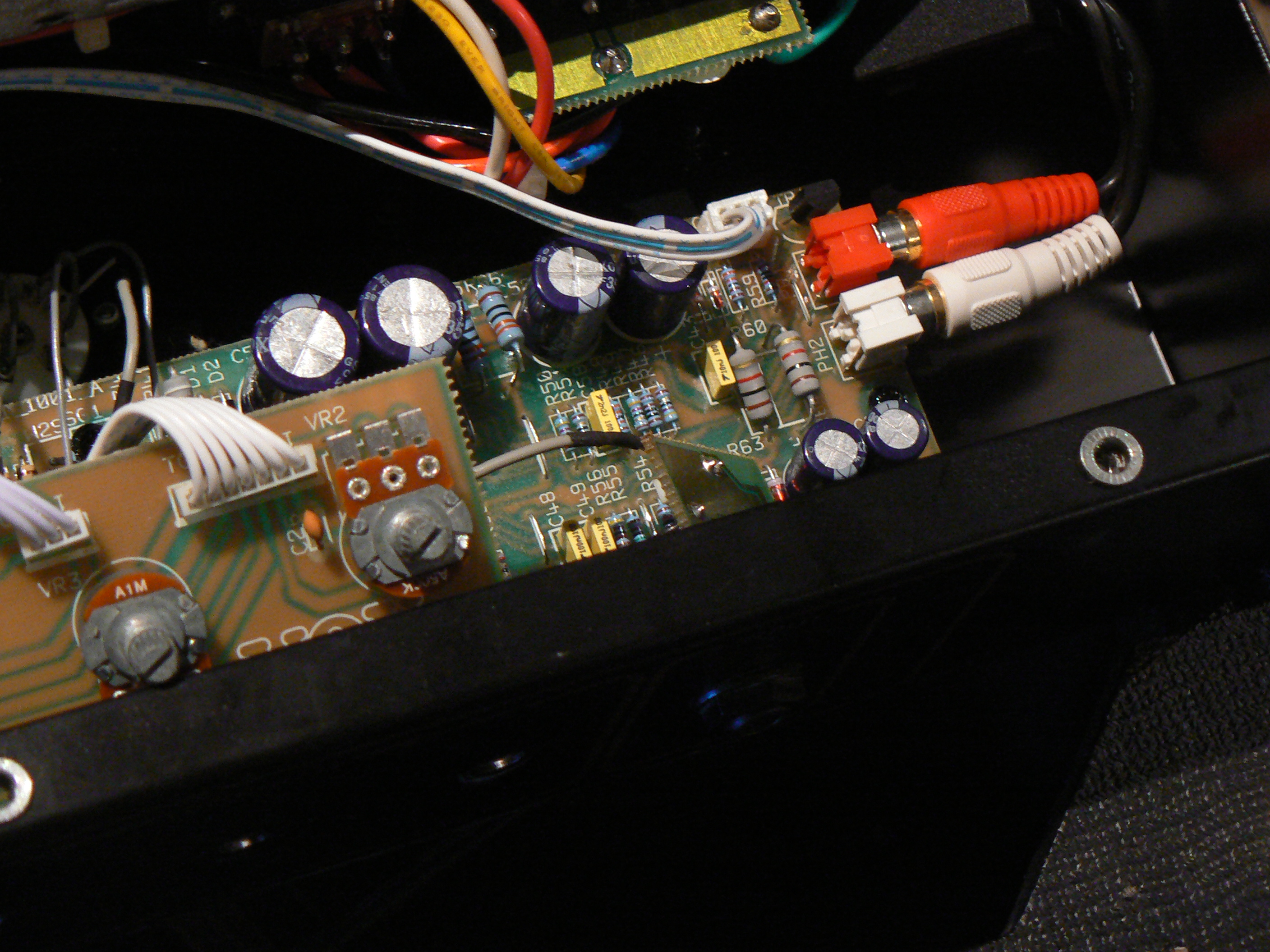



The last picture shows the final mod I performed, which was purely cosmetic and I figured i may as well do so something to really make the amp mine. I took out all the black knobs, put white ones for the top boost channel and the master volume and put brown ones for the tremolo (which sounds amazing in this amp by the way!) and reverb. I also stuck a Grateful Dead sticker on the front, cos I love the Dead!
After everything was finished I screwed the back board back on, turned the amp on and was greeted by a sharp hissing sound; it sounded like a snake had made its way into my amp. I took the amp to a tech and found that the problem was the JJ EL84 tubes were defective. Moral of story, don’t buy JJ Tubes. The tech replaced them both with Sovtek tubes which sounded ok. He also charged me $80 for them, on top of the $150 for the hour. Biggest waste of money ever. Just so you know, all the mods I’ve discussed so far went down on the same day, which is why I had to take the amp to the tech as i wasn’t sure what part of the process was causing the hiss.
I played with this tube setup for a couple of months before the 12AX7 Tubes started to go microphonic (hissing sounds, learned this term from my tech – expensive new knowledge), so I replaced them with the stock 12AX7 tubes I had initially took out, and they were fine for a week or so, but my tone gradually became more distant to the point where I had little to no overdrive. Just so you know, I play the guitar quite a lot so if you only play occasionally you might not have as much trouble with tubes as I did. I eventually decided to take the plunge into the NOS tube world (New Old Stock), as these tubes are unanimously praised as having superior longevity and tone. NOS tubes are tubes from as far back as the 60s, which haven’t been used and are out of production. Back in those days tubes were very abundant and were made more effectively, but after the digital boom they went out of production. That is until companies realised there was a guitar tube market, which is why modern day tubes are literally pumped out in factories like clockwork, which produces inferior quality tubes to drive a profit.
NOS tubes are fairly expensive, but after fitting them in I believe they are worth every cent. I bought my NOS tubes from kcanostubes.com, which has a wide variety of NOS and ANOS tubes (Almost New Stock) that are cheaper than their NOS counterparts, yet still infinitely times better than the current production ‘cheap’ tubes (ok, maybe I’m exaggerating a little!). NOS tubes average around $30-150 per tube depending on the brand, while ANOS tubes are generally half the price. New production tubes however are usually no more than $10 a tube. I ended up purchasing 1 NOS RCA 12AX7, 1 ANOS Mullard 12AX7 and 2 NOS Tesla EL84s (Tesla is the company that JJ’s eventually took over, and fucked up.) The Teslas were actually quite cheap for NOS at only $38 each! Pics below.
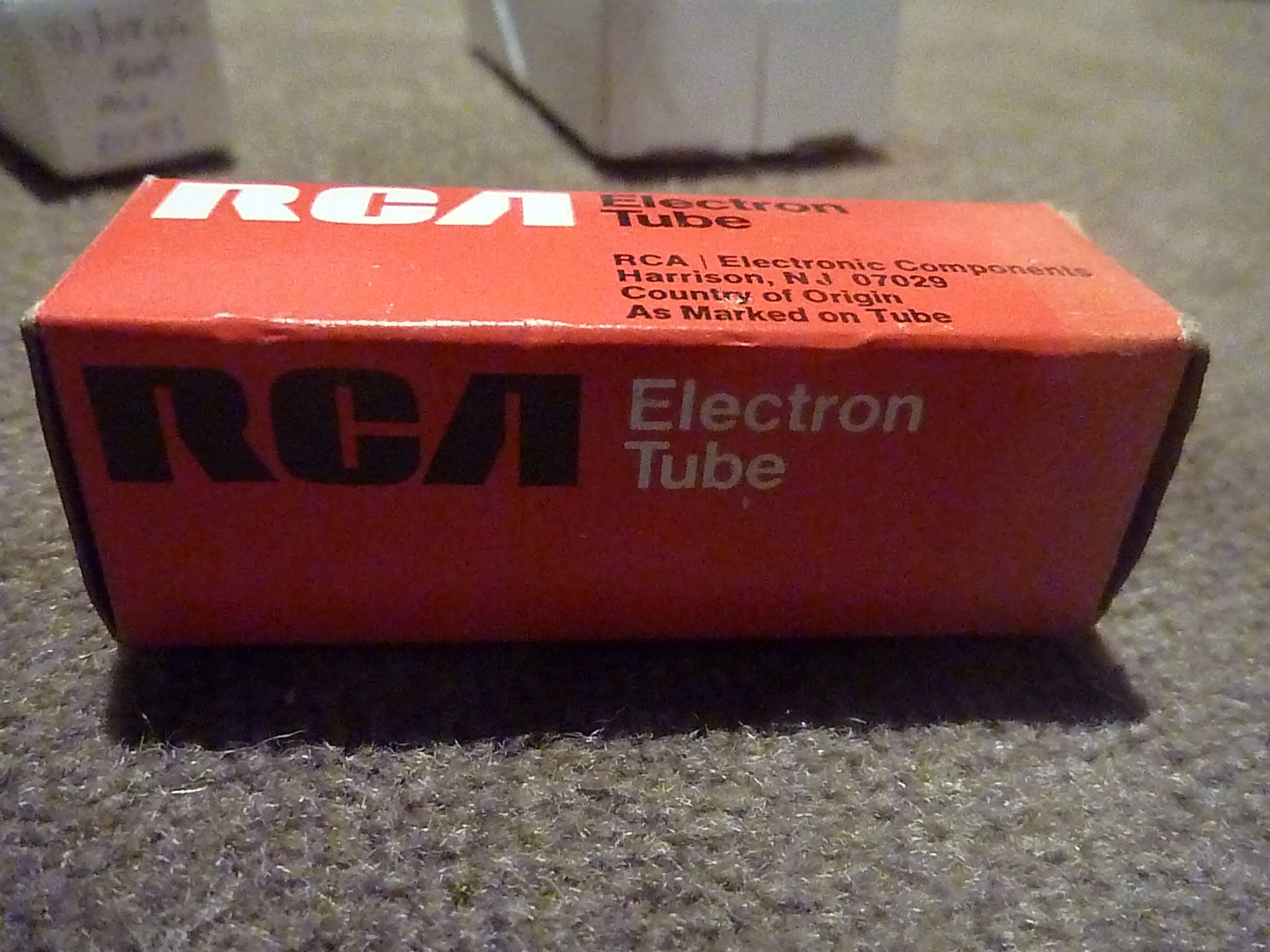
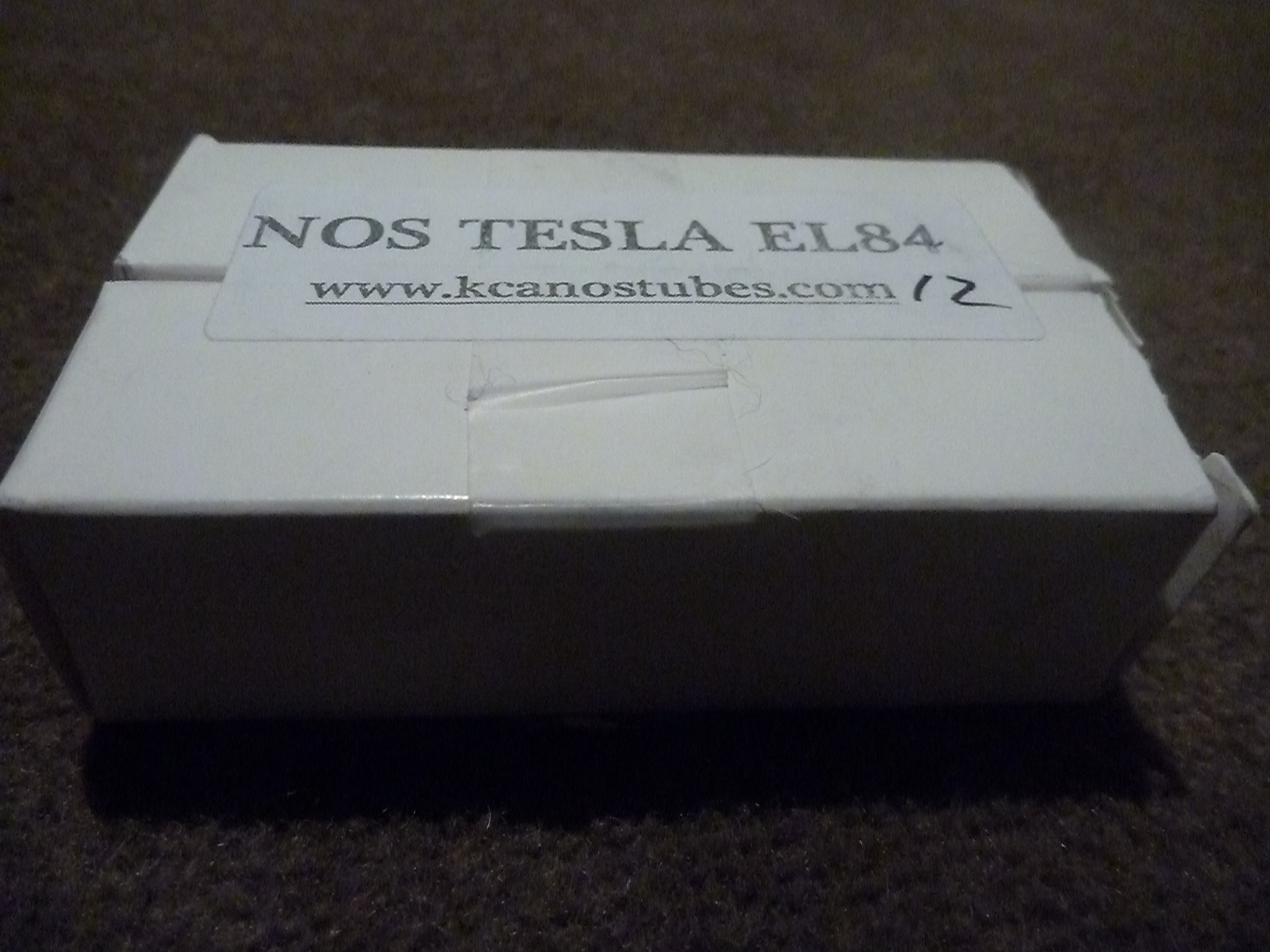
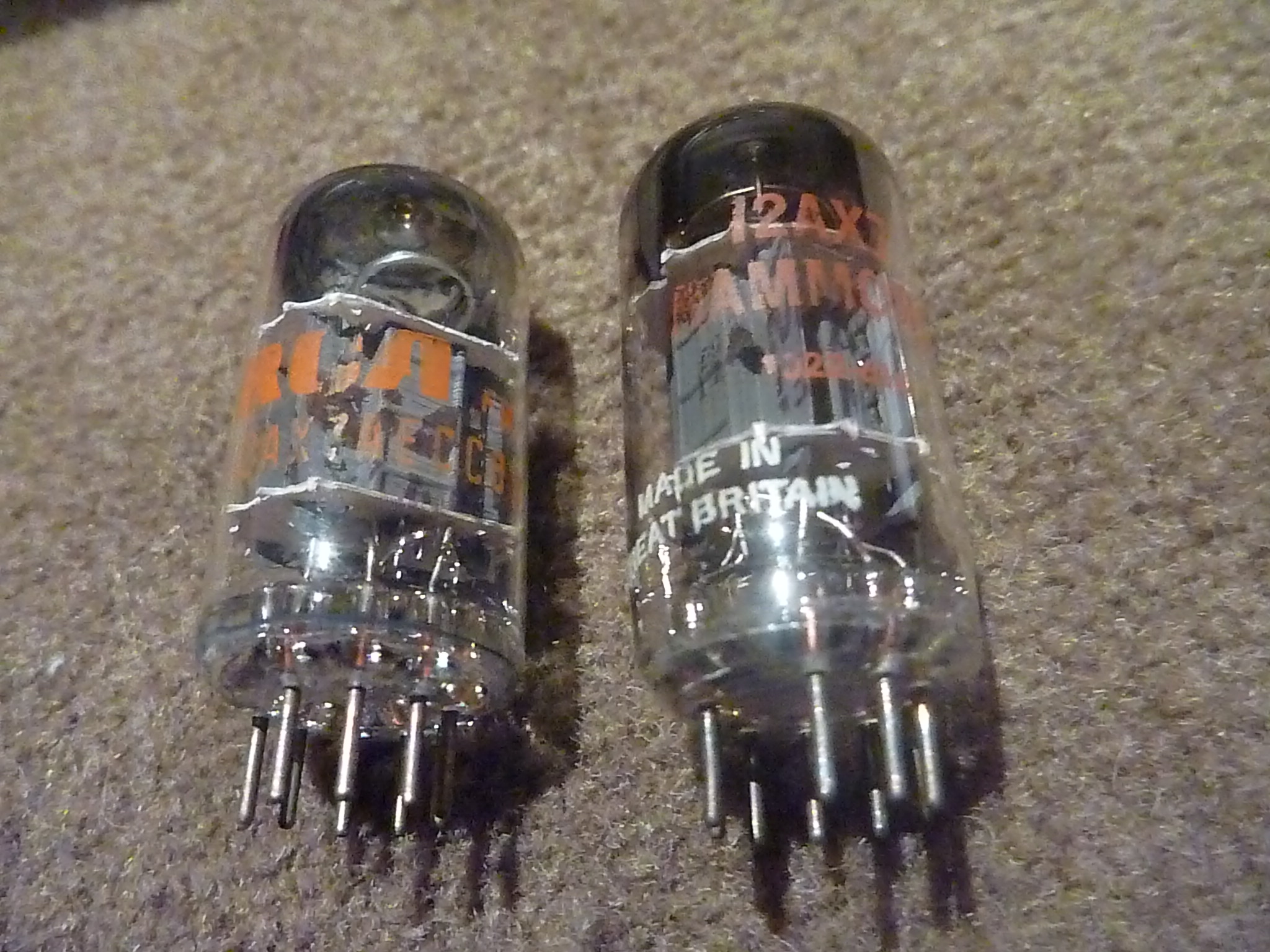
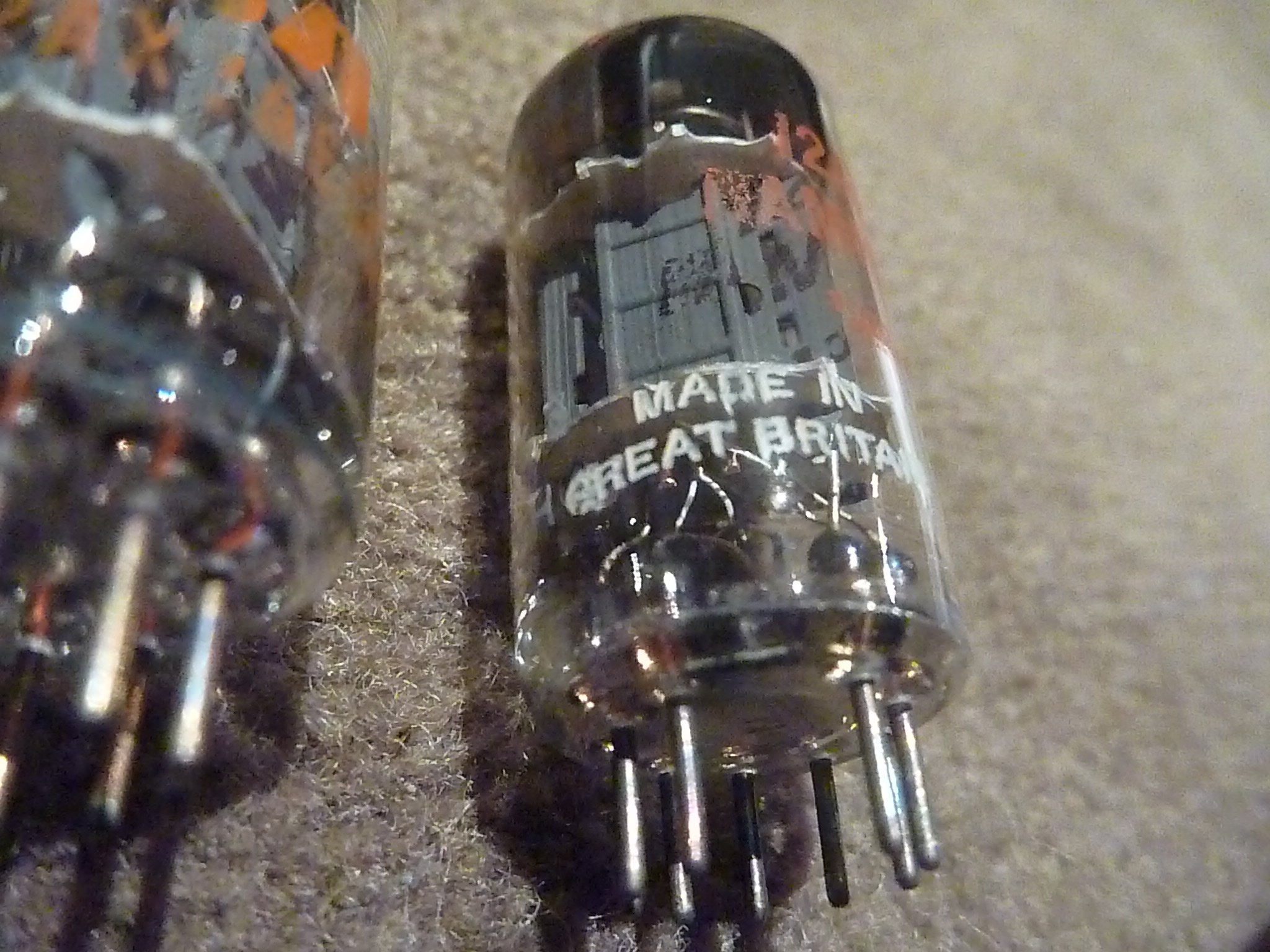

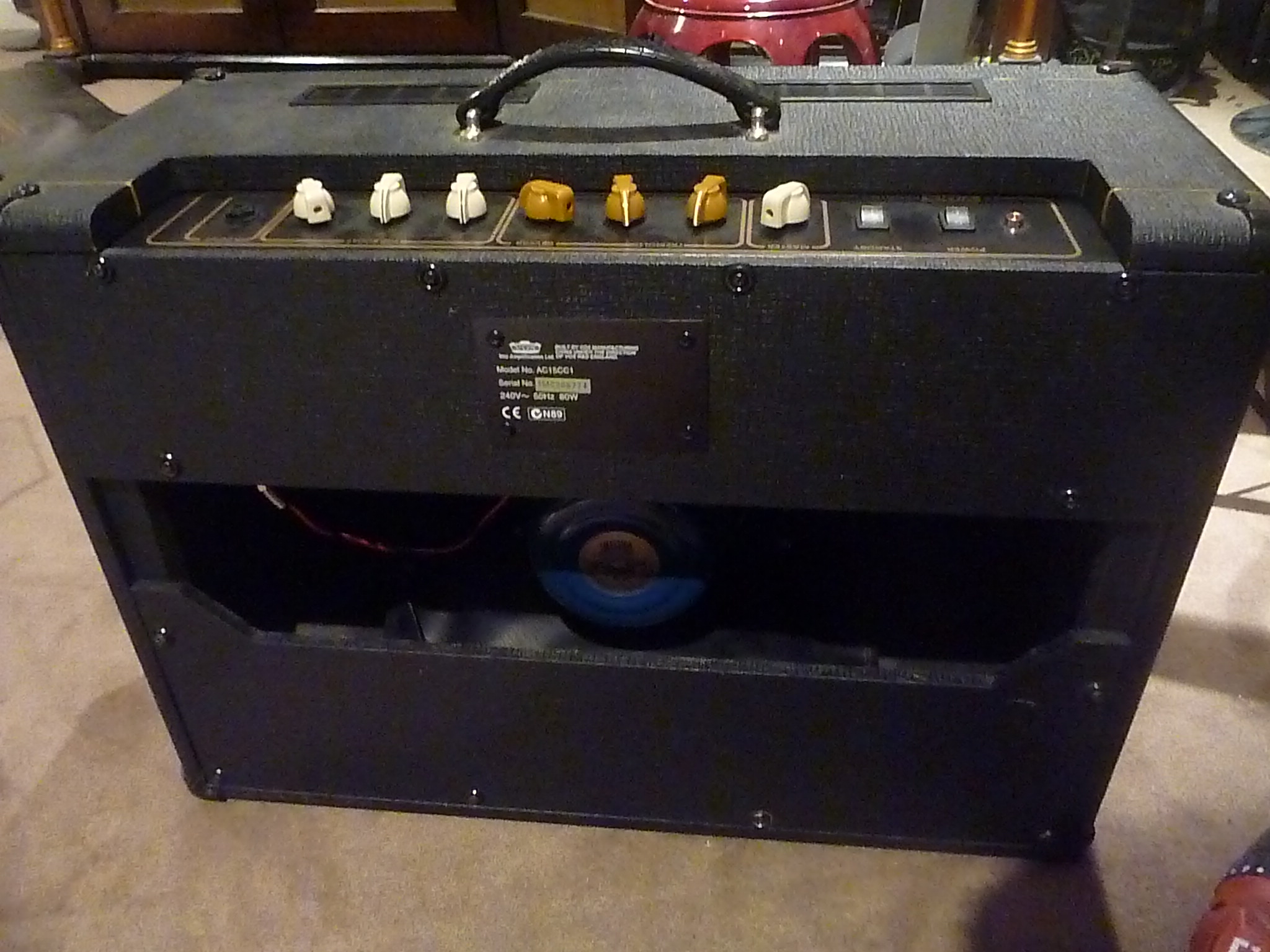

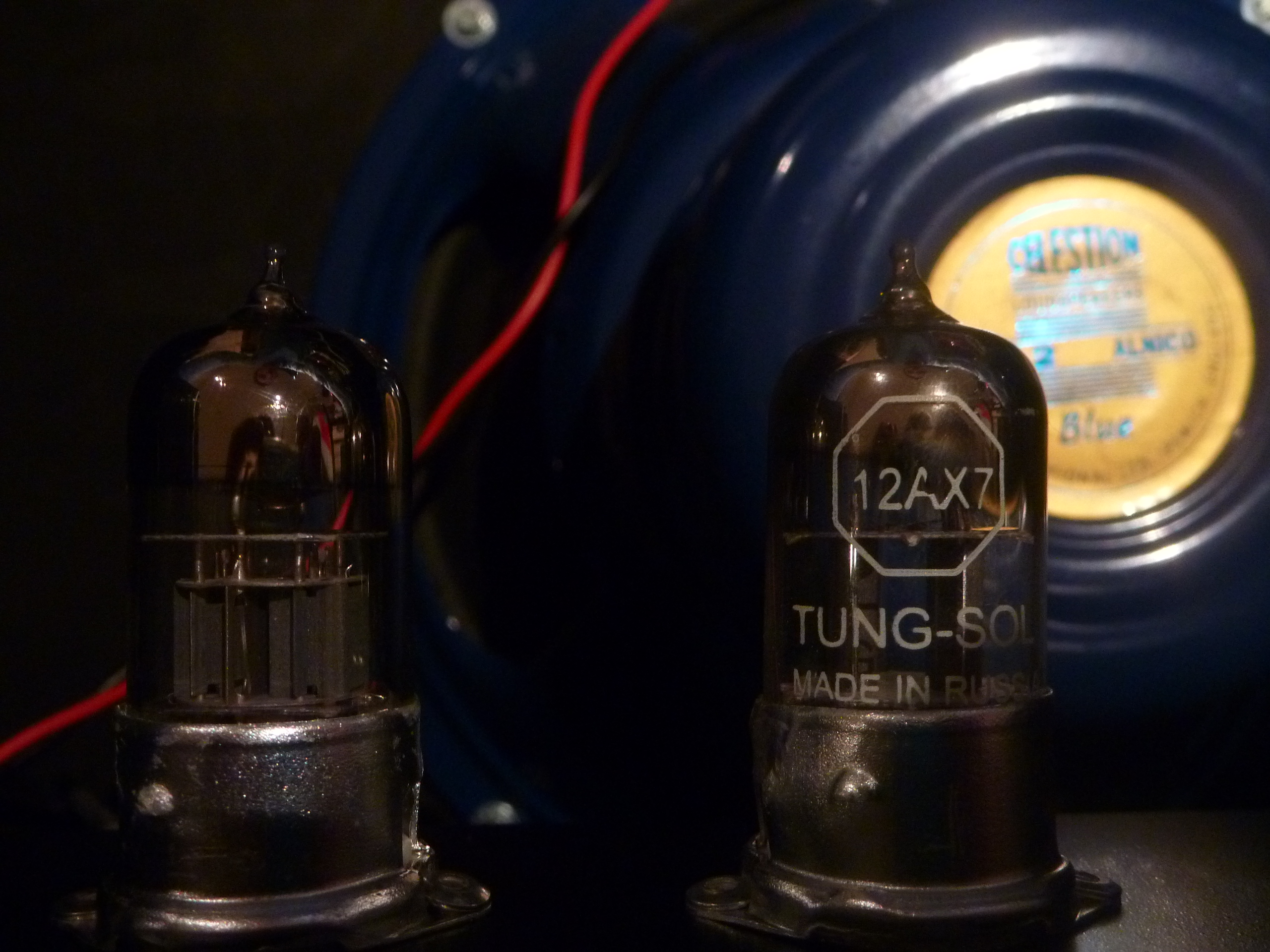





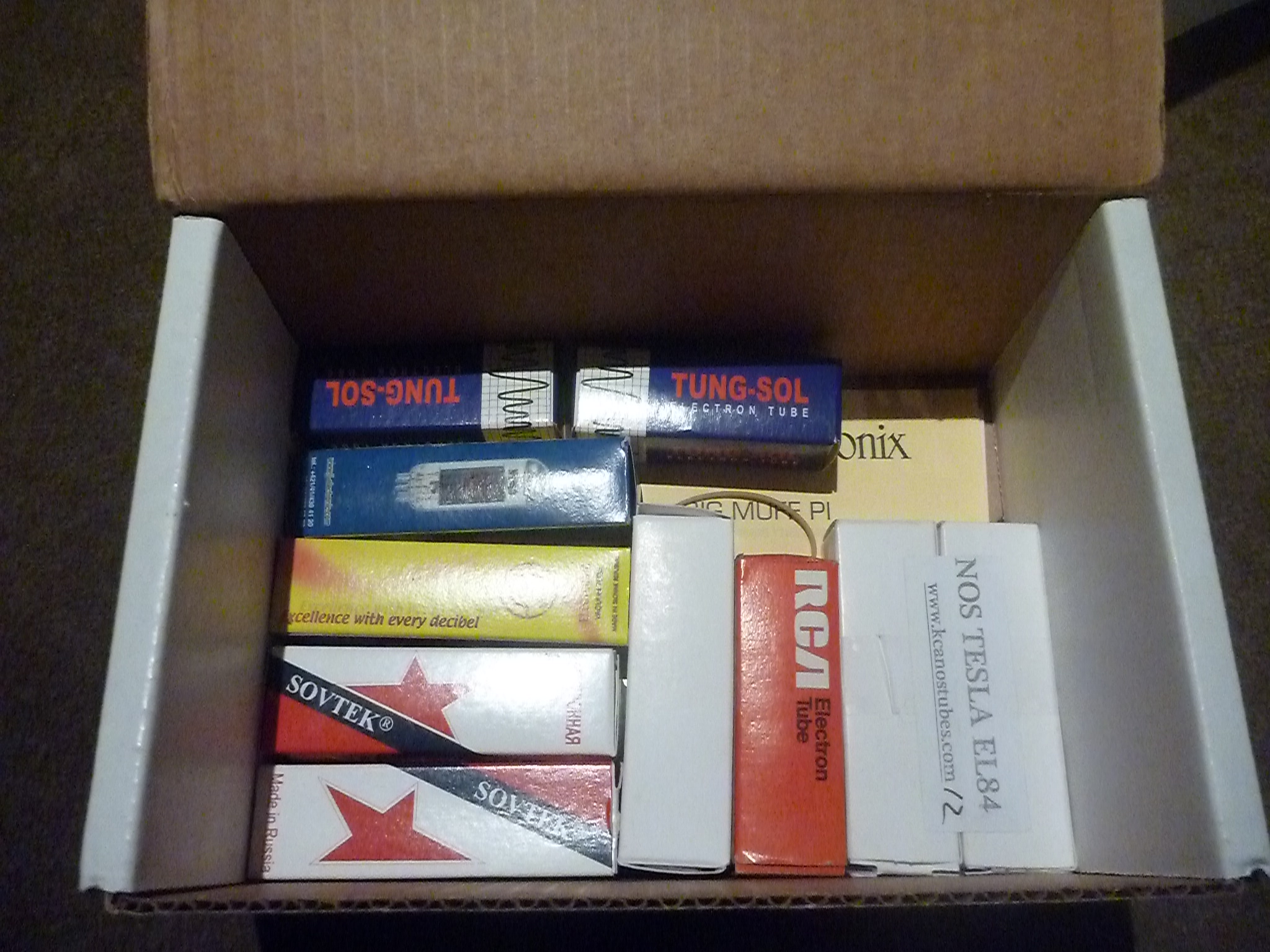
All I can say is WOW, the difference was night and day. It was as though a thick blanket was taken off the amp, and that’s saying a lot considering to my ears the amp sounded outstanding before I even put the new tubes in! Even my older brother, who doesn’t know anything about tubes or guitar tone, walked into my room while I was playing and told me my amp sounded amazing all of a sudden. NOS tubes apparently last a lot longer as well as they were built to last, so I definitely think they are a good investment. If you want to go the NOS route, but don’t have the money then you have a nice alternative. Buy only 1 NOS 12AX7 tube and put it in the V1 slot (the tube to the very left), as the V1 slot produces the most dramatic differences in tone. If you shell out $30-100 on one of these tubes then you will really do your amp and your ears some favours. In my opinion it is important to play with the best tone available to you as it encourages you to play more – good tone keeps you in front of your amp grinning with satisfaction at how good you are sounding. Good tubes also greatly improve dynamics, which enables you to hear tiny differences in picking attack. As for the 12AX7 in the V2 slot, and the two EL84 tubes, check out these sites for some solid reviews on what cheap new production tubes are available: (I can vouch for the Tung Sol 12AX7s, they sound great)
UPDATE: 10/04/2012 – Someone in the comments section asked me if I had any recordings of the amp pre-mod and post-mod to compare, but considering the modding process happened gradually over time I don’t have any accurate recordings of the amp pre and post mod. I did, however, record myself directly before and after I replaced the stock tubes with NOS, and have uploaded them for you to listen to. In all of these recordings the amp is post mod, with the Accutronics reverb tank and broken in Celestion Blue speaker. The recordings don’t do the sonic differences justice in my opinion as I was playing very loud and had the mic (from my iPhone) quite far away from the amp… take my word that it sounds much better in the flesh. Each recording is played with my Gibson SG 61 Reissue, with the first three stock/NOS comparison recordings being played with the bridge, middle, and neck pickups in that order. I was in a hurry to record these (hence the sloppiness) as I wanted to get it over with so I could jam with my mate and really enjoy the tubes. The wah demos are taken from two jams we did that day, one quick one before the tube change and one long one after. Also note, these were recorded over a year ago, and so are not representative of my current guitar playing 😉
Stock tubes
- Had to Cry Today – Blind Faith
- No Quarter – Led Zeppelin
- Politician – Cream
- Crossroads – Cream
- White Room Jam – Cream (Wah demo)
NOS tubes
- Had to Cry Today – Blind Faith
- No Quarter – Led Zeppelin
- Politician – Cream
- Crossroads – Cream
- Black Magic Woman Jam – Fleetwood Mac (Wah demo)
Unfortunately I didn’t record any clean samples, as I was in my obsessed with Clapton phase at the time and was mainly playing the amp overdriven. I can assure you that the amp delivers very articulate cleans though, worlds better than before I did any mods. The overdrives sound a lot more organic to my ears after I did the mods and especially after I changed the tubes. The speaker and reverb tank change also made a massive difference. Listening to the two wah demos you can clearly hear that the stock tube wah is quite muffled while the NOS tube wah is very dynamic and clear. Also note, that it has been over a year since I’ve replaced the tubes with NOS, and they are still sounding just as good as the day I put them in!
Thus ends my modding journey, my Vox AC15 has new life breathed into it and I will never consider replacing it. If you are looking for a new amp, make sure you look at the new Vox AC15C1, these amps are exceptionally good, and don’t even need a speaker change as they come stock equipped with a Celestion G12M Greenback speaker, which is a legendary sounding speaker (I have one installed in another one of my amps). These are the speakers that were used primarily in the 60s Marshall amps used by Cream, The Jimi Hendrix Experience, and The Who. If you’re looking for the creamy overdriven sound of Eric Clapton or Jimi Hendrix, then look no further than the Celestion Greenback. I hope this has been of some help to someone out there in the big old internet. If you have any questions or suggestions please don’t hesitate to ask. Finally be sure to check out my mod guide on the Vox AC4TV!
UPDATE 12/12/12:
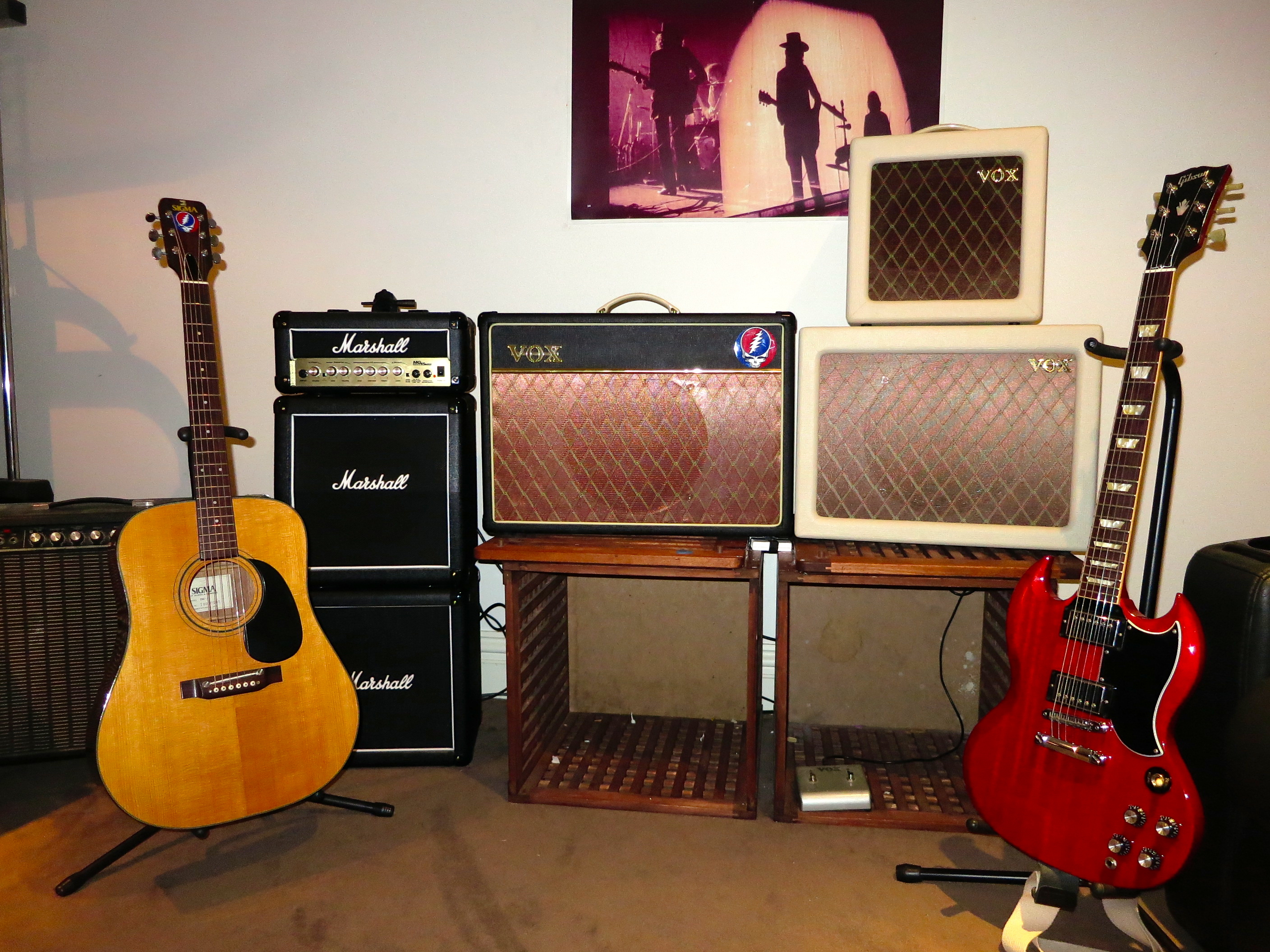
Today I purchased an external 1×12 cabinet (Vox V112TV) for my AC4TV combo, and put a Celestion G12M Greenback in it and have been using it with my AC15! It is incredible, it now sounds like I am playing on a completely new amp. Not only does my AC4TV sound galaxies better with the cabinet than it did previously, but my AC15 has opened new doors of tonal possibility. The extension cabinet is closed back, which really sounds great with a Greenback (Greenbacks don’t sound so good with open back cabs), while the VOX AC15 is open backed and has the Celestion Alnico Blue, which sounds great in open back cabs but not so good in closed backs. The back of the AC15 has two speaker connection sockets, one for the internal speaker and one for a extension 16ohm cabinet. The speaker in my AC15 is 16ohm and so is the one in the cabinet, and I can play through either one at 16ohm, or both in parallel at 8ohm each by flicking the impedance switch. The Greenback hasn’t broken in yet, but when it does I will upload some recordings of me playing through the Celestion Blue by itself, the Celestion Greenback by itself, and both of them in parallel, both with clean and dirty tones.
Stay tuned!
